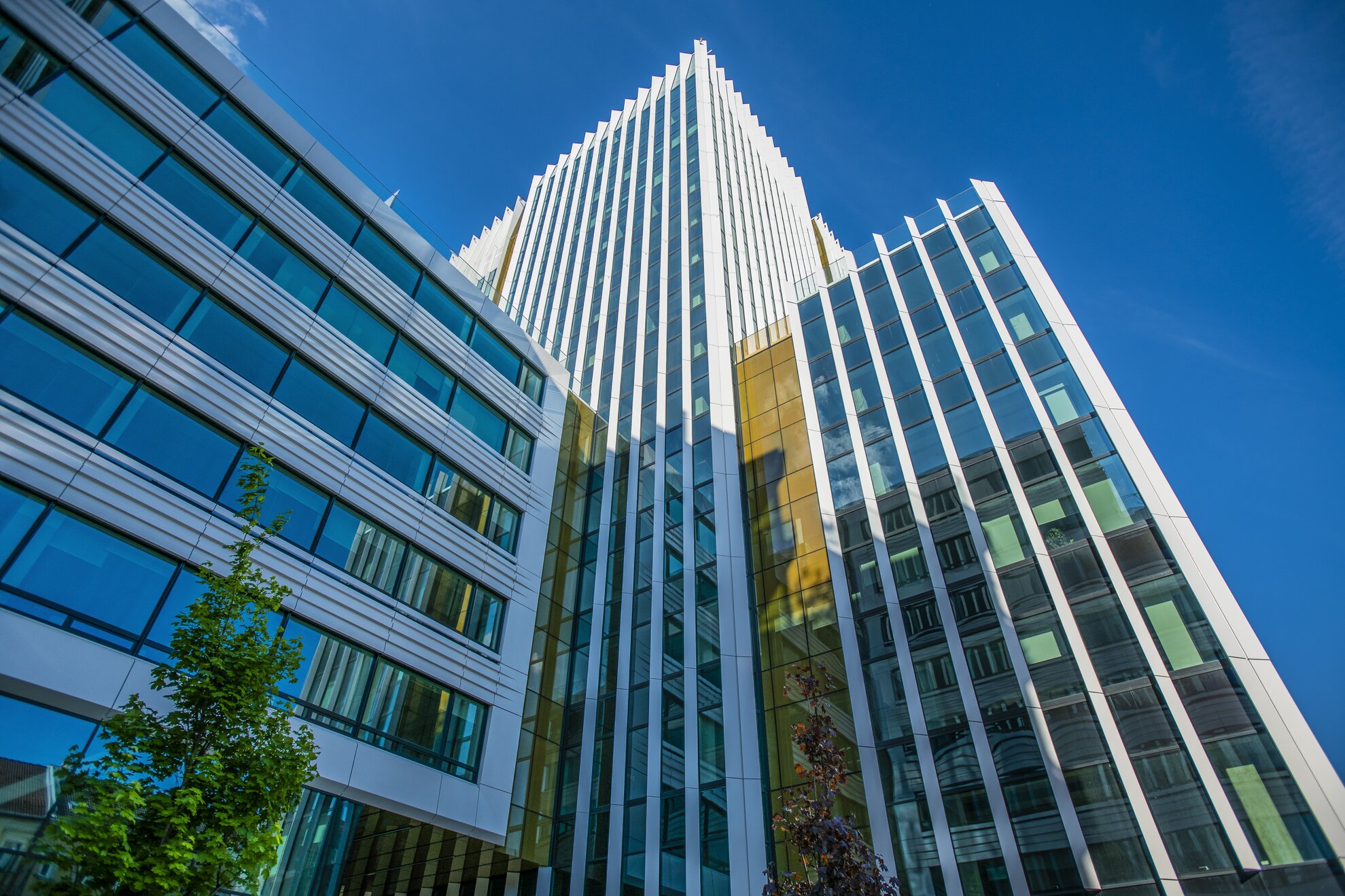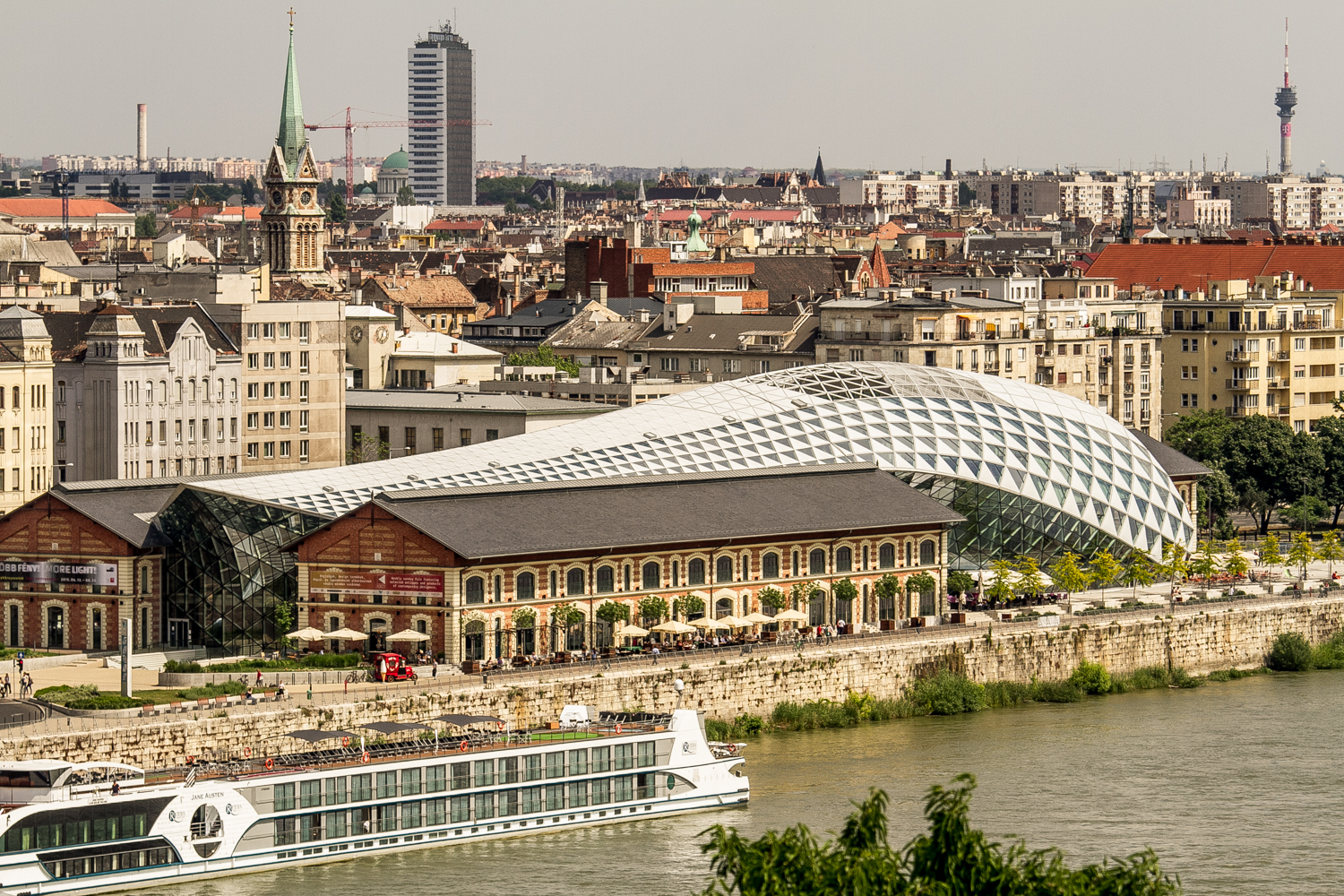Agora Budapest

The area around the Pest bridgehead of Árpád Bridge has long been coveted by developers, who envisaged high-rise buildings here. London-based MAKE Architects drew up the zoning plans and the concept for the Agora Budapest project, which generated at least as much controversy in the planning phase as the MOL complex at Kopaszi-gát (see below).
The Agora towers rise at the intersection of Róbert Károly körút and Váci út, without dominating proceedings, or appearing as a self-serving showcase of star architecture.
Bálna Budapest

The futuristic Bálna (‘The Whale’) provides an interesting contrast to the Budapest of the 19th century, as illustrated by the warehouses alongside. Dutch architect Kas Oosterhuis created a strange, exciting building, a striking example of parasitic architecture – that is, a contemporary addition to an existing, usually monumental, building from which it draws its energy.
The opening of the Bálna was by no means smooth: despite the spectacular plans, implementation exposed many flaws, requiring more time on the part of the architect. The structure is covered in 1,628 pieces of glass of different sizes, the largest of which weighs 400kg.
House of Hungarian Music

The development of Városliget is still one of the most controversial in Budapest, where the problem is not with the renewal of City Park, but with the number of facilities being built there. The museums earmarked for the capital’s most popular public park will significantly transform the image of the area. The Ethnographic Museum on Dózsa György út already dominates the concrete plaque, which has been filled with cars for a long time, but the House of Hungarian Music, designed by the Japanese architect Sou Fujimoto.
Even from the visual design points of view, this was one of the most exciting buildings of the Liget Project, mostly due to its perforated, undulating, floating roof. The building, unkindly compared to Swiss cheese, will have not only stage concerts, but also music workshops, a library and an exhibition space. Creating harmony between nature and the building was particularly important to the architect, so he covered it with glass – which seems to be an essential material for any contemporary building.
ING HQ

For a long time, the ING headquarters on Dózsa György út designed by Erick van Egeraat and Judit Z Halmágyi was the most divisive contemporary building around City Park. This hubbub has died down, of course, partly because of the museums currently being built in the park. To this day, this emblematic building makes visitors stop, as it attracts attention not only with its glass façade, but also with its pattern imitating a waterfall, metal strips fragmented façade and motifs from textile art.
MOL Tower
The area around Lágymányos Bay was neglected for a long time, then it was embellished with restaurants and cafés to create Kopaszi-gát, a family-friendly, riverside attraction. A new quarter is being built here under the name of BudaPart, office and residential buildings, with the 120-metre tower of the MOL Campus being built right to it – MOL being the state oil company.
MOL's goal is to combine its previously dispersed offices into one building, so that 2,500 workstations will be set up in the 28-storey tower. This is built according to the concept of the world-famous Foster + Partners, who also designed the glass dome of the Reichstag, and many other iconic structures. How much it spoils or improves the World Heritage panorama of the Danube embankment is a matter of intense debate, but change the riverbank it will.




